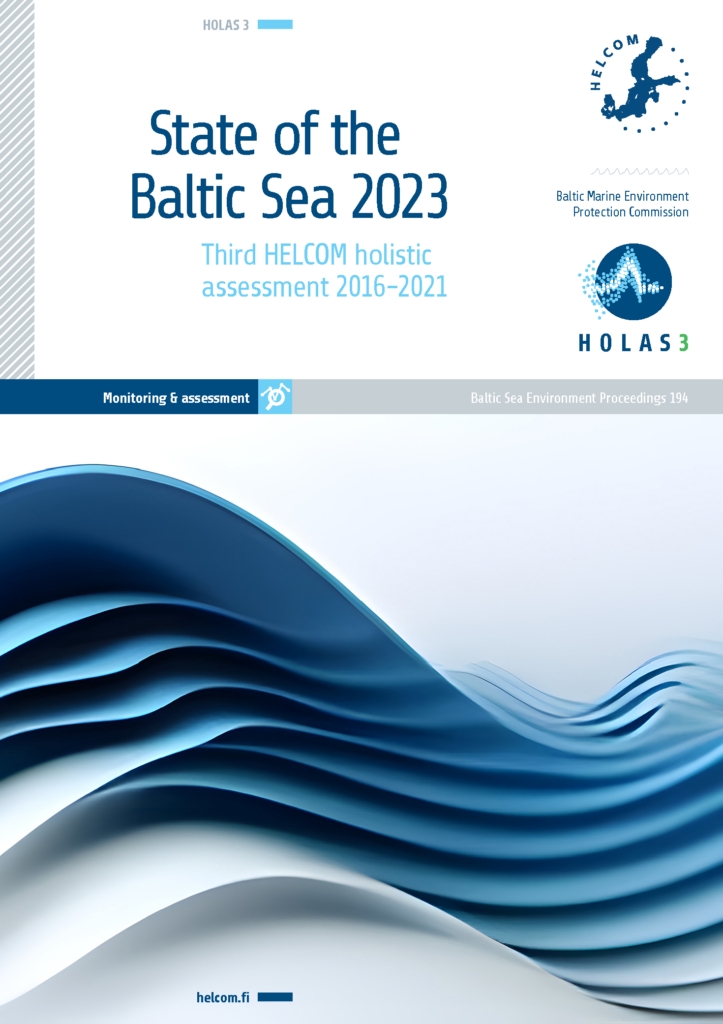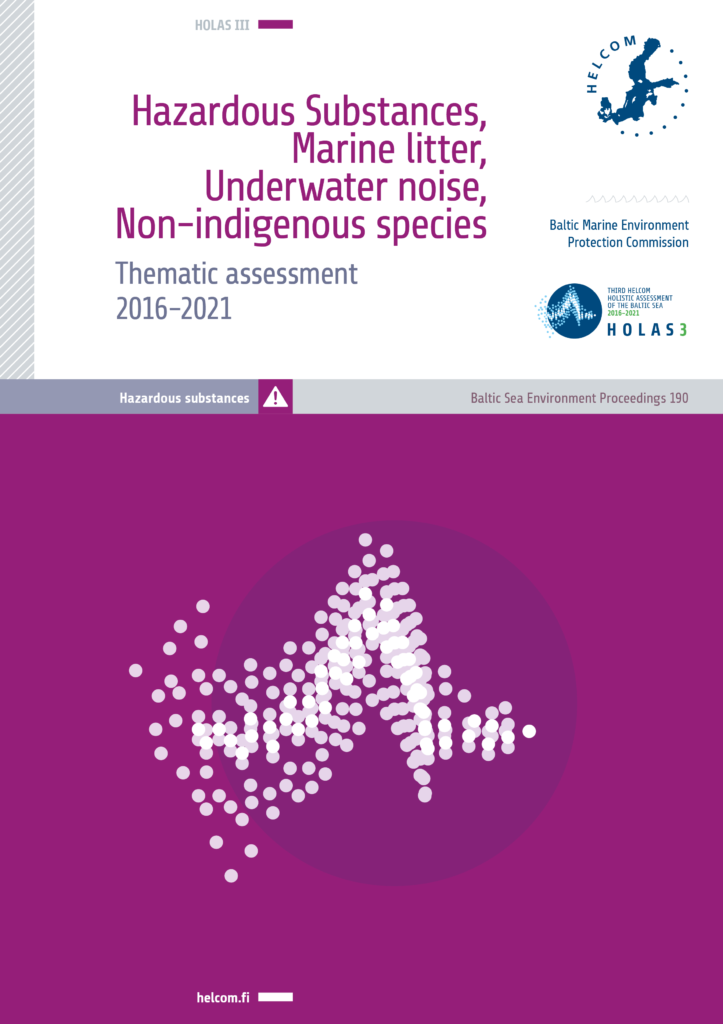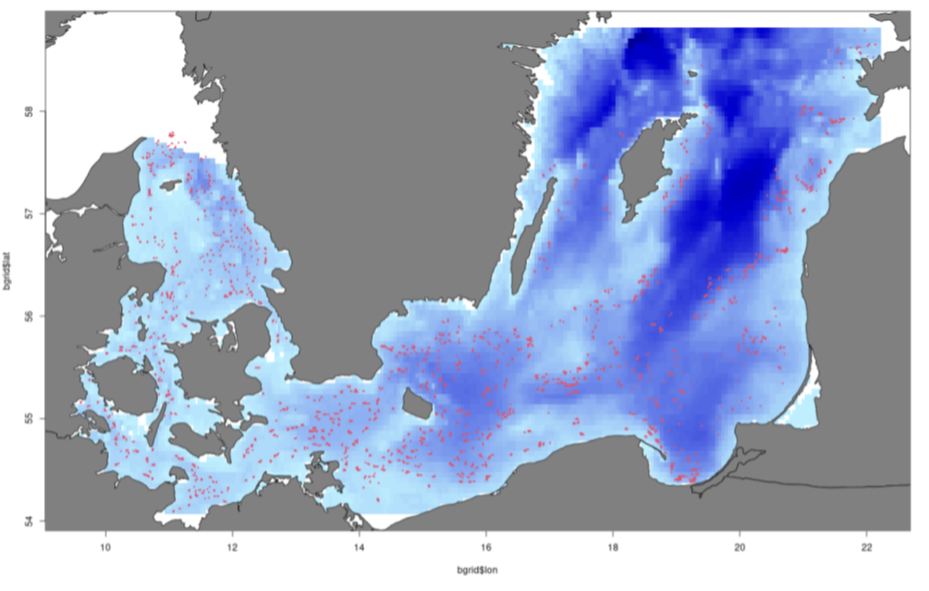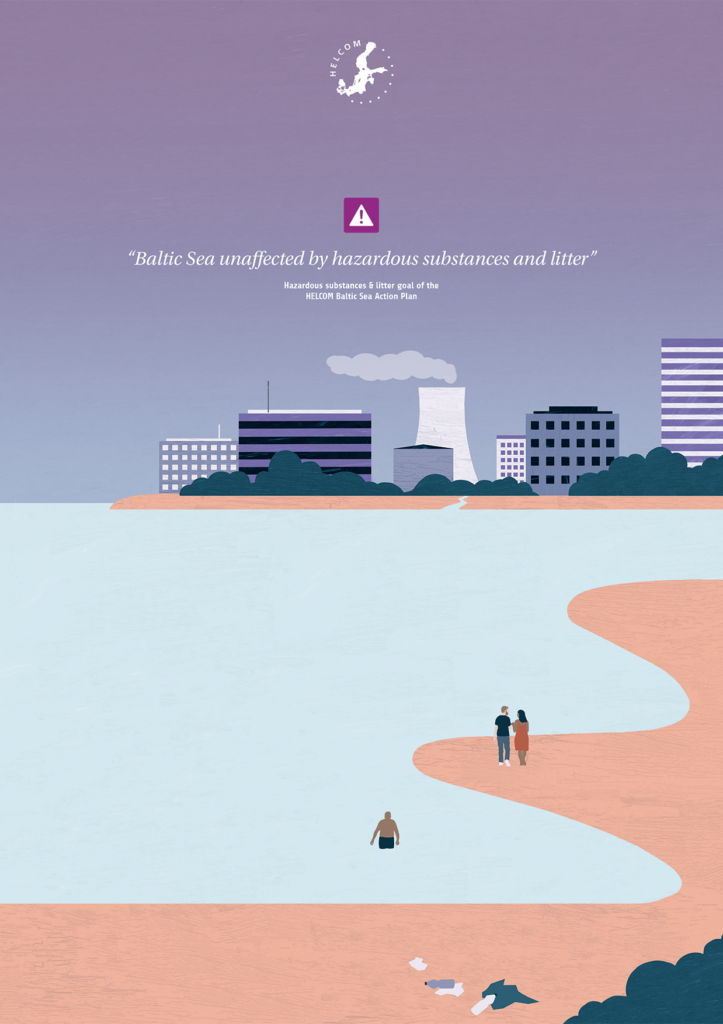MARINE LITTER
Marine litter
The status of marine litter in the Baltic Sea is currently evaluated based on beach litter and litter on the seafloor (Figure 4.11).
The HELCOM threshold value for beach litter is 20 litter items per 100 metres of beach. During 2016-2021, eleven out of the sixteen sub-basins that could be assessed were above this limit and did not reach good status. The subbasins with highest median values were the Sound (313 litter items per 100 m), the Gulf of Riga (156 items) and the Eastern Gotland Basin (96 items).
The sub-basins achieving good status for beach litter were Kiel Bay, the Bay of Mecklenburg, the Gdansk Basin and the Western Gotland Basin. The Quark had a median value below the threshold value, but the result was evaluated as uncertain due to limited data. Plastic litter, including single-use items, was the most common litter category, accounting for between 32 and 93% of the total number of litter items (Figure 4.12).
Several sub-basins showed a decrease in the total litter count over time, which correlates with a decrease in the count of single-use plastics and plastic litter items.
What is marine litter?
Marine litter comes from a vast range of human sources and reaches different marine compartments. Beach litter is monitored worldwide as a proxy of human impacts on the ecosystem. Information on the amount of litter can indicate general levels of potential harm to marine biota and ecosystems, as well as societal losses in the form of aesthetic values, economic costs and hazards to human health. Litter that has accumulated on the seafloor is equally relevant and can have significant impacts on organisms at sea. Evaluation of litter types and categories helps us understand the sources of marine pollution and assess the efficiency of environmental management measures.
The Baltic Sea Action Plan states the following ecological objective for marine litter:
- No harm to marine life from litter.

State of the Baltic Sea 2023 — The third HELCOM holistic assessment (HOLAS 3)
State of the Baltic Sea 2023 is a synthesis report that builds on, and integrates, results from a wide range of assessment products produced within the third HELCOM holistic assessment. Its role is to link information from the underpinning assessment products together, thus highlighting the holistic aspects. With this in mind, the summary report focuses on presenting the results and on an in-depth look at why we are seeing these results, providing over-arching context and analysis. The report helps develop a clearer picture of where we are and how things are connected, supporting coordinated and effective measures to strengthen the Baltic Sea environment.

Thematic assessment
Hazardous substances, Marine litter, Underwater noise, Non-indigenous species
The thematic assessment report on hazardous substances, marine litter, underwater noise and non-indigenous species (HELCOM 2023c), addresses each of these topics collectively regarded as pollution within the HELCOM framework.
The report provides insights into the latest developments and current state-of-the-art evaluations for pollution. It builds upon initial progress started by HOLAS II (2011-2016) and corresponding work under aligned processes (e.g. EU level and MSFD relevant developments), moving towards indicator-based assessments for all mentioned topics. Additionally, areas of ongoing development, including those lacking fully operational indicators, are incorporated to present a broader picture of key pollution-related issues.



